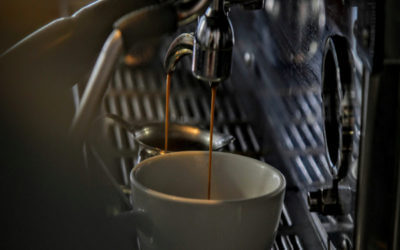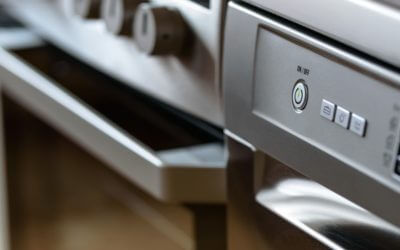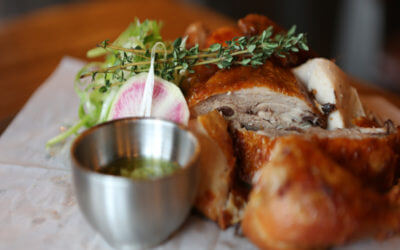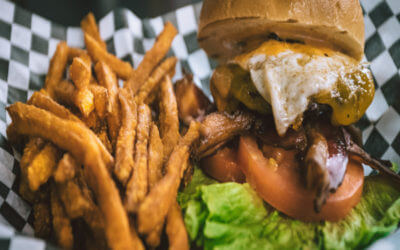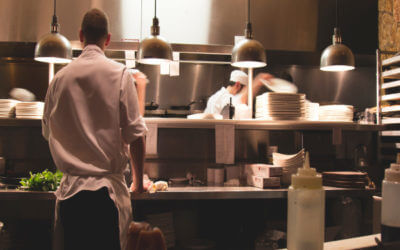How to Run an Energy-Efficient Restaurant
June 9, 2017You probably don’t need to be reminded of the high cost of electricity in running a restaurant compared to an energy-efficient restaurant.
Right now, many establishments, including restaurants, are going green and adopting eco-friendly strategies to conserve energy. Going green won’t just lower the cost of your restaurant’s electricity bill. It will also boost your brand by showing customers that you’re being a responsible member of your local and global community. To get started on the path to an energy-efficient restaurant, check out our tips below.
- Know How Much Energy You’re Using
You can only ascertain this by contacting your electricity company. They will provide a breakdown of what your electricity consumption looks like and the cost of what you are using. With that in mind, you can set goals in terms of reducing your usage and aiming towards an energy-efficient restaurant.
- Use Only Energy Star Equipment
You can’t do without ovens, grills, refrigerators, and many other kitchen essentials. What you can do without is the guzzling of electricity by these appliances. Now is the time to shift to energy-efficient restaurant equipment that use a fraction of the energy that older models use.
Replacing equipment can be expensive, so you may want to start by first replacing your oldest equipment and making a plan to phase out the rest of your energy-intensive appliances over time. With the savings on your utility bill, you will save money over the long run.
- Cut Down on Heat Usage
Heat is absolutely necessary for an energy-efficient restaurant, but its usage can be reduced to save costs if you have the willingness to do so. One simple way is to optimize your water temperature so that it’s not any hotter than it needs to be. Even for dishwashing, ensure you are not going far above the 140 degrees Fahrenheit stipulated by NRA.
- Shut Down Idle Equipment
You may not believe this, but just like every other restaurant, you are probably wasting hundreds of dollars on idle equipment. Instruct your staff to turn off equipment when it’s not being used. You can a go a step further by using timers for outdoor lighting. Boom, now you’re one step closer for an energy-efficient restaurant.
- Maintain and Service Equipment Regularly
You’re overworking your restaurant equipment if you’re not servicing and cleaning it regularly. Any worn out parts of your dishwasher, toasters, sandwich makers, ice machines and refrigerators should be replaced for a more more energy-efficient restaurant.
- Use Only Energy-Efficient Restaurant Lighting
Energy-efficient restaurant light bulbs are easy to install and they save you money on your electric bill. For the most energy savings, use energy efficient light bulbs everywhere – including the dining area, the kitchen, the bathrooms and outdoor lighting.
- Adjust Your Kitchen Layout
If your oven is near your ice machine, both appliances will require more energy to maintain their temperatures. There must be a separation between heating and cooling systems. Keep similar systems together and away from others.
What’s in a Cooking Pot, How to Choose the Right One?
As a restaurant owner, your cooking needs might vary. Did you know that a good quality pot can greatly improve your cooking experience, while also improving the quality of your cooking? This cooking equipment is a very important one that cannot be done away with...
5 Things Every Restaurant Owner Should Do Before Buying Used Kitchen Equipment
Equipping your restaurant properly can cost a lot of money, so buying used kitchen equipment is the go-to choice for many restaurateurs. Buying used kitchen equipment for a restaurant is a bit different than buying used equipment for your home, however. You will...
Top Restaurant Technology Trends in 2018
When looking to buy restaurant supplies, you want to be on the leading edge of technology trends. This will keep your kitchen running smoothly. Let’s take a look at some of the most recent trends in restaurant supplies technology. 1. New Payment Options Who would...
5 Different Ice Shapes and Why You Should Care About Them
Ice makers are very popular in the restaurant and foodservice community because they eliminate the need to buy ice every day. And of course, adding an ice maker to your collection of foodservice equipment means you will always have ice on hand when you need it. An...
Pulping and Grinding: A Starter’s Guide to Reducing Commercial Food Waste Costs
For most restaurant owners and managers, the expenses involved in making meals are always under careful consideration. Water is needed to prepare, cook and wash food; power is necessary for food prep, cooking and cooling, and so on. However, how many of us consider...
Choosing the Right Milk Cooler: Cold Wall or Forced Air?
In a restaurant, milk is an essential to have on hand for coffee and other café-style beverages, for serving with kids’ meals, and as a key ingredient in many recipes. Keeping your milk properly chilled can be difficult without the proper restaurant equipment....
How to Choose Your Next Commercial Meat Smoker
The movies that connect with us on a personal level are the ones that linger in our memories forever. Anyone who has used a commercial meat smoker knows that they have a huge influence on the taste of a meal. You need to have just the right kitchen equipment to get a...
Are High Speed Ovens Too Good to be True?
You might have heard a few of the bold claims that foodservice equipment manufacturers have been making about high speed ovens, but they can’t be possible, right? Cooking three times as faster as regular ovens? Five times as fast? Fifteen times as fast? It may seem...
Choosing the Right Food Storage Containers for Your Restaurant
Choosing the right kitchen supplies will make a difference in your restaurant. Whether it is heavy duty kitchen equipment or food storage containers, each piece of equipment plays its own important role. Today, we are going to talk about how to choose the right food...
Tipton’s Guide to Perfect Poultry Trussing
Do you ever truss birds in your commercial kitchen? Trussing is a fantastic cooking technique because it makes poultry cook faster, look more attractive and taste better. If your commercial kitchen prepares poultry, you don’t want to miss these trussing tips. Trussing...
How to Eliminate Excess Condensation in Your Kitchen
Is your commercial kitchen getting steamy? If so, you could have more than just an uncomfortable working environment on your hands. Excess moisture in your commercial kitchen can result in the corrosion of equipment, the development of mold, and even damage to your...
The DIY Guide to Your Restaurant’s Own Garden
Stocking your restaurant supply with your own home-grown herbs and produce can truly bring your dishes to life. When it comes to food, everyone knows there’s nothing like homemade and home-grown. Having your own culinary garden, however large or small, can help you...
5 Reasons a Meat Grinder Will Set Your Burgers Apart
The more you do to prepare your foods in-house with the right kitchen equipment, the fresher and more flavorful your dishes become. There are all sorts of restaurants offering fast-food style burgers, but some diners are looking for the real deal. A fresh, juicy...
Pest Preventions to Implement in Your Commercial Kitchen
Restaurant pests: it’s something that few people want to think about. Like it or not, pest management is an essential consideration for every commercial kitchen. Offering food, shelter and water, the unprepared commercial kitchen naturally provides everything pests...
Choosing the Right Material for Your Cooking Equipment
Kitchens are very unique to their chef. Just like a car mechanic has a toolbox unique to them, so is the cooking equipment in a kitchen. And over time, the same cooking equipment become a natural extension of the chef. What tools are you using in your kitchen? It...


